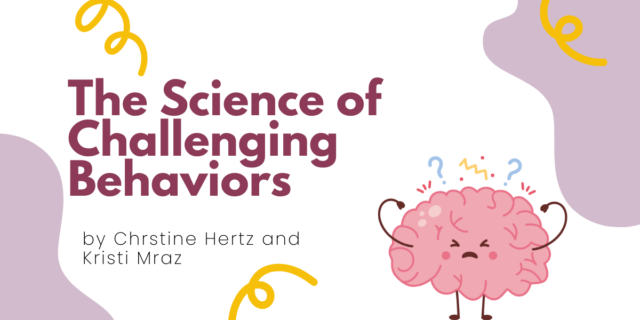
by Carla Dabau
The teaching profession has always come with challenges, but recent years have seen an alarming rise in teacher burnout. Teachers today are managing larger classes, taking on additional administrative tasks, and struggling to find a healthy balance. As we navigate these growing demands, it’s essential to consider the spaces where we spend so much of our day.
Classrooms are not only places where students learn—they’re where teachers live one-third of their day (and remember, another third is spent sleeping!). These spaces should support the well-being of teachers just as much as they nurture student growth. This goes beyond functionality—it’s about creating spaces where everyone feels comfortable, included, focused, and supported. The good news is that even small, thoughtful changes can make a world of difference.
Why teacher-centered spaces matter
Often, when we talk about classroom design, the focus is on how to engage students or improve their learning outcomes. But teachers spend just as much time in these spaces, and a well-designed classroom can help reduce stress, increase motivation, and create a sense of balance. It’s not just about aesthetics; creating a supportive environment can play a crucial role in managing teacher burnout.
When we feel comfortable and organized in our surroundings, we can better handle the demands of our roles. This means that by making our classrooms more inviting and supportive, we’re better equipped to help our students succeed.
Gradual changes with a big impact
- Maximize natural light
One of the simplest yet most impactful changes you can make is to maximize natural light in your classroom. Natural light has a profound effect on mood, focus, and overall energy levels. If possible, make sure your windows are free from heavy curtains or obstructive furniture to let in as much sunlight as possible. If your classroom lacks adequate natural light, there are affordable alternatives like full-spectrum light bulbs that mimic sunlight, such as Solistic bulbs. They offer a natural, sunlight-like brightness without the sharp blue light common in many LEDs.
- Incorporate greenery
Adding plants to your classroom is another simple yet effective way to create a calming, welcoming environment. Greenery not only brightens the space but also helps foster a sense of peace and tranquility. You don’t need to spend much on plants either. Stores like Walmart and Home Depot offer affordable options. Even big-box stores like IKEA ofer low-maintenance plants like succulents or ferns for just a few dollars. Another great tip is to check out your local farmers’ market or community plant sales for inexpensive greenery.
Take it step by step—you don’t have to transform your space all at once. Start small. Maybe you’ll just pick up a plant or two this week and see how it feels. Don’t worry, I’m here to guide you. Keep reading for more affordable ideas to make your space a haven.
Creating a comfortable space for you
It’s important to carve out a small corner of your classroom that serves as a “cave” area, as Rosan Bosch would suggest, a quiet, cozy space where you can retreat for a moment of calm and reflection. This could be the place where you take a moment to breathe and recharge during the day. It doesn’t need to be elaborate or expensive. A comfortable chair, a small table with a lamp, and a personal touch like a framed picture can create a relaxing retreat within your classroom. This space can serve as your go-to spot when you need a mental break. Even just a few minutes spent in a comfortable, quiet area can help you regain focus and energy, making it easier to manage the stresses of a busy teaching day.
Take care of your mental health through your physical space
Given that we spend so much time in our classrooms, it's essential to make sure the space also supports your mental health. Here are a few quick tips that can make a big difference:
- Declutter: A clean, organized space reduces stress. Make it a habit to keep surfaces clear and minimize visual clutter.
- Personalize the space: Add small touches that bring you joy or comfort, whether it’s photos, artwork, or a plant on your desk.
- Create zones: Designate different areas for different activities, reading corners, group workspaces, and teacher-only spaces, so that you have a clear division between work and relaxation.
- Use calming colors: Consider introducing soft, neutral tones that have a calming effect, such as blues and greens, either through décor or classroom materials.
- Incorporate movement: Have a space for stretching or standing. It can be beneficial for both you and your students to get up and move during long periods of sitting.
Remember, investing in your space is an investment in yourself—and ultimately, in the success of your students.
Examples of some possible spaces:

***


Carla Dabau: I am an educator with extensive experience teaching in diverse curricula, including the International Baccalaureate Primary Years Program (IB PYP) in the Netherlands, as well as the national curricula of the United States and Spain. I recently embarked on my next adventure, moving to Switzerland to continue my educational journey. Over the years, I have developed a passion for designing enriching learning environments that blend educational philosophies with practical classroom strategies. My teaching practice focuses on fostering innovation, nurturing inclusivity and creativity, and implementing effective classroom management techniques through positive discipline. In addition to my teaching experience, I hold a postgraduate degree in designing, managing, and organizing educational spaces, officially qualifying me as a designer of learning environments. My teaching practice focuses on fostering mental health and well-being, nurturing inclusivity and creativity, and creating impactful learning spaces that support positive discipline and effective classroom management.
See https://about.me/carladp for more. Connect with Carla on Instagram: https://www.instagram.com/carladabaup/


